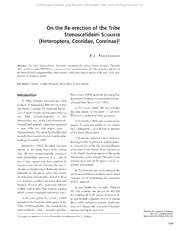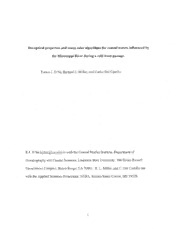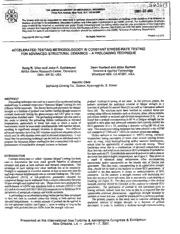
NASA Technical Reports Server (NTRS) 20020038559: Accelerated Testing Methodology in Constant Stress-Rate Testing for Advanced Structural Ceramics: A Preloading Technique PDF
Preview NASA Technical Reports Server (NTRS) 20020038559: Accelerated Testing Methodology in Constant Stress-Rate Testing for Advanced Structural Ceramics: A Preloading Technique
:_;!!_!i • _ _"_ i : _ -_:;r':-_ _.... •._ ._ • - • ._ • .ThreePsrkAvenue, New¥ork, N.Y. 10016.59,JOii_ _ ___::f_,:.'., ,_ , ..... • • _.. .... : :,__,..-_-_!i_!_ -_,_ _. : • •:%.. ii_;_, _-?. . _./::- . . • _ , ...... Sectk)ns,orprintedinitspublications,Discussionispdntedonlyifthepaperispuo,sfle(] inan A:_M];:;Journal. ro[ uut,u, _,: z., " copy material for internal or personal useunder those circumstances not falling within the fair use provisions of the Copyright Act, contact the Copyright Clearance Center(CCC),222 Rosewood Drive, Danvers, MA 01923. tel:978-750-8400, www.eopyright.com. Requests for special permission orbulkreproduction should be addressed tothe ASME Technical Publishing Department. PrintedinU.S.A. CopyrightO 2001 byASME AllRightsReserved ACCELERATED TESTING METHODOLOGOGY IN CONSTANT STRESS-RATE TESTING FOR ADVANCED STRUCTURAL CERAMICS - A PRELOADING TECHNIQUE Dean Huebert and Allen Bartlett Sung R. Choi and John P. Gyekenyesi NASA Glenn Research Center, Cleveland, Science &AppliedTechnology Woodland Hills,CA 91367, USA Ohio, 44135, USA Han-Ho Choi Samsung Coming Co., Suwon, Kyeonggi-do, S. Korea ABSTRACT Preloading technique was used as ameans of anaccelerated testing preload, resulting in saving of test time. In the previous papers, the methodology in constant stress-rate ("dynamic fatigue") testing fortwo authors developed the analytical solution of fatigue strength as a different brittle materials. The theory developed previously for fatigue function of preload for natural flaws [3] as well as indentation induced strength as a function of preload was further verified through extensive flaws [4]. The solutions have been verified by constant stress-rate constant stress-rate testing for glass-ceramic and CRT glass in room- testing using different materials such as alumina, glass, silicon nitrides temperature distilled water. The preloading technique was also used in and silicon carbide at ambient and elevated temperatures [3-6]. It was this study to identify the prevailing failure mechanisms at elevated found that a preload corresponding to g0 % of fatigue strength can be temperatures, particularly at lower test rates in which a series of applied to most glass and advanced ceramics that typically exhibit the mechanisms would be associated simultaneously with material failure, SCG parameter of n > 20, resulting a dramatic saving (80 %) of test resulting in significant strength increase or decrease. Two different time. This accelerated testing technique has been adopted in the ASTM advanced ceramics including SiC whisker-reinforced composite silicon test standards (C 1368 and C 1465) on constant stre.ss-ra_ te,st_= nitride and 96 wt% alumina were used at elevated temperatures. Itwas Unlike ambient or low temperature (< 900°C) testing, elevated- found that the preloading technique can be used as an additional tool to temperature testing encounters in some cases several limiting factors pinpoint the dominant failure mechanism that is associated with such a such as creep, crack healing/blunting and/or material deterioration, phenomenon of considerable strength increase or decrease. which limit the applicability of constant stress-rate testing. These limitations occur due to a combination of elevated temperature and slow test rate, and result in an inaccurate SCG evaluation ifincluded in the data analysis [7]. Considerable material deterioration takes place at INTRODUCTION the lower test rates at higher temperatures, see Figure 2. This occurs as Constant stress-rate (or called "dynamic fatigue") testinghasbeen a result of enhanced creep deformation often accompanying used to characterize the slow crack growth behavior of advanced microcracks and/or macrocracks on the tensile side of flexure test ceramics and glass at both ambient and elevated temperatures. The specimens. This data point, corresponding to an appreciable strength advantage of such testing over other methods lies in its simplicity: drop, should not be used in the analysis to obtain SCG parameters. If Strength is measured in a routine manner atfour ormore testrates by included in the data analysis, it causes an underestimation of SCG applying constantdisplacement rate orconstantloading rate. The slow- parameter. On the contrary., a strength increase with decreasing test crack-growth (SCG) or life-prediction parameters required for rate also occurs at lower test rates, due to presumably crack healing or component design can beestimated from asimple relationship between blunting, see Figure 2b. The data point corresponding to this obvious fatigue strength and applied test rate. These merits have prompted the strength increase should be excluded in the analysis to estimate SCG establishment of ASTM test standards both atambient (ASTM C1368 parameters. The application of preload to test specimens prior to [1]) and atelevated (ASTM C1465 [2]) temperatures todetermine SCG testing certainly reduces total test time so that it is expected that the parameters ofadvanced ceramics and brittle materials. undesirable nonlinear phenomenon - significant strength decrease or A preloading (or accelerated testing) technique hasbeen developed increase at lower test rate -would be minimized by apertinent preload. to save test time in constant stress-rate testing at both ambient and The primary purpose of this study was to continue validating the elevated temperatures. A certain amount of preload canbeapplied to analytical solution of fatigue strength as a function of preload the testspecimen quickly, see Figure 1, prior to testing aslong as the developed, in order to establish a database through exlensive testing strength with preload doesnot differ from thestrength-with zero Presented at the International Gas Turbine & Aeroengine Congress & Exhibition New Orleans, LA -- June 4 - 7, 2001 I (a) (b) v -I O'3 v O O e" t N.O" Log (STRESS RATE) Log (STRESS RATE) Figure I. Schematics ofsignificant strength decrease (a) and increase (b) occurring due todifferent failure mechanisms at lower stress rates in constant stress-rate testing at elevated temperatures. The point "N" represents the 'expected' strength with SCG asa dominant failure mechanism. [a) Failure _2 (b) Failure .._ el. _ Preload es_ < < Time Time Figure 2. Modes of loading applied in constant stress-rate testing with: (a) no preload (conventional testing), and (b) preload. with glass-ceramic and CRT (Cathode-Ray Tube) glass at room fatigue strength) plotted as a function of log (individual stress rate), ternp_-att_. The s_ondary purpose was tobetter understandhow the based on Eq. (I). Equation (1) is the basis for constant stress-rate preloading technique can beused tominimize the phenomenon suchas testing (ASTM Ci36g and C 1465) to determine the SCG parameters significant strength decrease orincrease occurring atlower test rates, of advanced ceramics andbrittle materials. The basic SCG law usedin identifying governing mechanisms associated with elevated- Eq. (1) was the following empirical power-law relation: temperature failure of materials. Two different advanced ceramics were used forthis purpose, including 30 vol %SiC whisker-reinforced composite silicon nitride and hot-pressed 96wt % alumina. v=_t=A[KK_/] n (2) IC where v, a, t and A are crack velocity, crack size, time, and SCG BACKGROUNDS parameter, respectively. Kz and Kicare, respectively, stress intensity Constant Stress-Rate ("Dynamic Fatigue") Testing factor and critical stress intensity factor (fracture toughness) inmode I Constant stress-rate testing has been used to determine the slow loading. crack growth (or called fatigue, delayed failure or suberitical crack growth) behavior of brittle materials in a wide range of temperatures. Preloading Theory Strength is routinely determined asa function of applied test (stress) Inthis section, the previously derivedanalytical solution offatigue rate for agiven environment. The SCG or life prediction parameters strength as a function of preload is briefly presented. For the natural required for component design can be estimated from the following flaw system with no localized residual stresses, fatigue strength as a relationship t_tween strength and applied stress rate [1,2] function of preload can be expressed [3] 1 1 logaf =_-_+1]og_ +log D (1) O"== (1 + apn+l) _'i'+l (3) where or/ is the fracture (or fatigue) strength, 6"is the stress rate where u-*is the normalized fatigue strength, in which the fatigue applied, and nand D are SCG parameters to be determined. The SCG strength with preload is normalized with respect to the fatigue parameter n and D can be obtained from the slope and intercept, strength with zero preload, o_pis preloading factor (0<otp_<l), in respectively, of a best-fit linear regression analysis of log (individual This isa prepfint or reprintofa_paperintended forpresentation at a conference. Because changes-may bemade beforeformal publication, thisismade available withtheunderstanding that itwill notbe citedorreproduced without thepermission oltheauthor. support ring diameters. The nominal dimensions of glass-cennnic rectangular beam Slg_imens in uniaxial flexure were 5.0 mm by 2.5 mm by 50 ram, respectively, in width, depth and overall length, while !.10 , , , , , , , i .... the respective nominal dimensions of CRT glass rectangular beam test 1.09 specimens were 10 ram by 6 ram by 45 nun. The nominal dimensions !.08 Numerical Solution / of CRT glass disk specimens in ring-on-ring biaxial flexure were 65 1.07 nun by 2.5 ram, respectively, in diameter and thickness. The glass- 11..0065 AnalyticalSolution n=/51/ 0 ceramic test specimens were chemically etched to reduce machining damage. The CRT glass specimens were machined, polished and then u3 !.04 1.03 abraded on the tensile sick: with saad.tt_per. A total of six different 1.o2 stress rates ranging from 70 to7xl0 MPa/s were used for glass- ceramic, with a total of 20-30 test specimens at each stress rate. For _ li..O_l CRT glass test specimens, a total of five different stress rates ranging 80- from 5.5 to 5.5x10 "4MPals were utilized in both uaiaxial and biaxial O 6.99 Z O.98 I , , , J , _ , 160 flexure, with approximately 23 test specimens at each stress rate. At 0 10 20 30 40 50 60 70 80 90 100 lower stress rates, some preloads, equivalent to 60 to 95 % of fracture load, depending on material and stress rate, were applied using aquick loading rate (see Figure 1) to the test specimens prior to testing. PRELOADING FACTOR, % [%] Preioads were applied for glass-ceramic at two different stress rates of 7x10 "3and 7x10"4 MPa/s, while for CRT glass they were employed at Figure 3. Normalized strength as a function of preloading factor the lowest stress rate of S.Sx10 "4MPa/s. Additional preloading testing for different SCG parameter n's [3]. was also performed for glass-ceramic at an extremely low stress rate of 7x10 "5MPa/s with a 95 %preload, using a total of 14 test specimens. The amount of preload at this lowest test rate was determined based on the 'expected' strength with zero preload, by extrapolating the which the applied preload stress is normalized with respect to the strength/stress-rate regression data (i.e., Eq. (1)) obtained in arange of fatigue strength with zero preload. The resulting plot of Eq. (3) for 70 to 7x10 -4MPa/s. Testing was carried out in accordance with ASTM various values ofn is shown in Figure 3. As can be seen in the figure, C 1368 using electromechanlcal and servohydranlic test frames the normalized fatigue strength increases with increasing preloading (Models 8501 and 8562, Instron, Canton, MA) in load control. factor. The rate of increase in strength is more dominant with decreasing SCG parameter n, due to enhanced susceptibility to SCG. Elevated-Temperature Testing: Identification of Failure For most glass and advanced ceramics, the values of n are typically Mechanisms greater than 20. In this case, a preload corresponding to 90 % of Constant stress-rate testing was previously carried out in flexure in strength (tzp = 0.9) results in a strength increase by 0.5 % (o'* _< air for 30 vol % SiC whisker-reinforced (GN10) composite silicon nitride at 1300°C [8] and 96 wt % alumina at 1000°C [7]. The detailed 1.005), based on Eq. (3). In other words, fatigue strength with a 90 % experimental procedures, materials and experimental results can be preload increases by only 0.5 %, compared with the fatigue strength found elsewhere [7,8]. GNI0 composite silicon nltride exhibited a with zero preload. This 90 % preloading gives rise to a 90 % test-time decrease in strength at0.033 MPa/s. Constant stress-rate testing in this saving, which is the most direct effect of the preloading technique as a work was conducted in flexure for GNI0 composite silicon nitride at means of dramatic saving of test time. An 80 % preloading gives an 80 0.033 MPa/s where strength decrease occurred. A total of seven % test-time saving with a strength difference of only 0.04 % specimens were tested at0.033 MPa/s at 1300°(2 with an 80 % preload. (o'* =1.0004); and so on. A dramatic time saving can be particularly For alumina, strength with no preload was determined at 0.00033 amplified with increasing number of test specimens. Of course, for a MPa/s at 1000°C using a total of seven specimens. The strength of material exhibiting a low Weibull modulus (m _ 10), a lower preload alumina with a preload of 90 % was determined at the same stress rate should be used to avoid any premature failure, usually with a less-than using a total of eight specimens. The amount of preload to be applied 80 % preload [6]. Also note that preloading is most effective when was calculated based on the 'expected' strength with zeropreload atthe applied at the lowest test rate since most of total test time, 80 %, is stress rate of interest by extrapolating the linear regression line using consumed at the lowest test rate [3]. Eq. (1) together with the SCG parameter (n) determined for each material, as follows: EXPERIMENTAL PROCEDURES P=%, a, (4) Ambient-Temperature Testing for Glass-Ceramic and CRT Glass where P is the preload to be applied (MPa), and _r, is the 'expected' Constant stress-rate testing was conducted for twomaterials, glass- strength estimated at the stress rate of interest (e.g., the Point 'N' in ceramic and CRT (Cathode-Ray Tube) glass, in ambient-temperature Figure 2) by extrapolation of the linear regression line (Eq. (l)) based distilled water. Glass-ceramic test specimens were subjected to four- on the rest of strength data (excluding Point 'N'). All testing was point uniaxial flexure with 20-mm inner and 40-mm outer spans, performed using an electromechanical test frame (Model 8562, Instron, whereas CRT glass test specimens were subjected to beth four-point Canton, MA) in load-control. Limited fi'actographic analysis was uniaxial flexure with 40-ram inner and 80-ram outer spans and ring-on- conducted for selected test specimens to further verify failure ring biaxial flexure with 22-mm loading ring diameter and 60-ram mechanisms. RESULTS AND DISCUSSION i i i i i i i i Ambient-Temperature Testing 400 GLASS-CERAMIC (a) Theov_ resultsofconstantstress-ratetestingfor#ass-cera_c C 30O and CRT glass axeshownin Figure 4, whexefatigueslz_ was ¢,o plotted as a function ofapplied stress rate according to Eq. (1). The _ 200 decreaseinstrengtwhithdecreasinsgtressratewasevidentforthetwo materialsw,hichrepresenttshesusceptibilittoyslowcrackgrowth. TheSCG parametern wasdeterminedasn = 21and12,respectively, forglass-ceramiacndCRT glass(inbothuniaxiaalndbiaxiafllexure) byalinearregressioannalysibsasedonEq.(l). The effectofpreloadon fatiguestrengtfhorthetwomaterialiss _ 1o0 I I I, I I I I I depictedinFigure5,inwhichfatigusetrengtwhasplotteadsaftmction 10-5 10.4 10.3 10.2 10"t 10° 103 102 103 104 ofprcloadinfgacto(roh).Eachhorizontallineinthefigurersepresents thefatiguestrengthwithzeropreload.No significavnatriatioinn STRESSRATE, b [MPa/s] fatigusetrengtahsafunctioonfpreloadwasobservedfromthefigures 5O forthetwomaterials. l t I l' I I 40 A comparisonof theanalyticaslolutionof Eq. (3)withthe CRT GLASS (b) experimentadlatacanbemadebydeterminintgheexperimentavlalues of o* through fatigue strength with preload being normalized with 30 respect to fatigue strength with zero preload and by determining the theoretical values of o-*(Eq. (3)) with the estimated SCO parameter n 2o foreachmaterial. The resulting plots areshown inFigure 6. Forglass- r_ ceramic,thescatteirswithinapproximatel5y%, comparedwith the theory, resulting ingood agreement between the experimental dataand the theory. ForCRT glass, however, the scatter is increased byabout mo UBinaixaixailalFFlelxeuxruere 10 %, due to the increased strength scatter inherent to the test specimens. Despite this inherent scatter, agreement between the 10 I l I I I I Iris 10.4 10-3 10-2 104 l0o 101 102 experimental data and the theory isreasonable (Ifstandard deviation is usedinsteadof individuadlata,theagreementwould'look'better)I.t STRESS RATE, b [MPa/s] isparticularnloytedfortheresultobtainedattheextremelyslowtest rateof 7xl0"MPa/s forglass-ceramic. The 'expected' strength at this Figure 4. Results of constant stress-rate testing in ambient- lowest stress ratewith nopreload can becalculated byextrapolating the temperature distilled water: (a) glass-ceramic in uniaxial flexure; datain Figure 4a in conjunction with Eq. (1). This predicted strength CO)CRT glass in both uniaxial and biaxial (ring-on-ring) flexure. was very close within ! %to the actual strength determined with a 95 For clarity of presentation, the average strength was plotted for %preload using atotal of 14test specimens. Eachtest specimen atthis CRT glass Co). lowest stress rate would fail in about 480 h(20 days) if no preload is applied. By contrast, with an application of a95 %preload, time to failure was reduced toabout 24 h(one day), resulting ina tremendous strength [g]. On the contrary, the strength with an 80 % preload saving of test time. Hence, it was feasible to generate in 14days the decreased byonly 7%. Hence, asignificant strength recovery of about strength d_ta at the lowest test rate, compared with 280 days if no 16% was achieved with the preloadup to80 %. Ithad beenobserved preload is used, a great impact on testing economy. To the authors' that the specimens tested with zero preload exhibited not only an best knowledge, this would be the fast data ever generated at this ultra- appreciable creep deformation (creep strain _ 0.5 %) but also the low test rate in constant stress rate testing forbrittle materials. The presence of microcracks and macrocracks on the tensile side of the results/database of the preloading tests determined for both glass- flexure specimens. Bycontrast, the specimens tested with apreload of ceramic and CRT glass in this work indicate again that preloading 80%didnotexhibit any sign ofthe presence of micro- ormacrocracks technique can be used with a reasonable accuracy as an accelerated on the tensile surface. This indicates that shortened test time - a testing methodology in constant stress-rate testing on the basis of the reduction of g0%in time -significantly minimized creep deformation, developed theory, Equation (3). while slow crack growth was operative as amajor failure mechanism. Theresults for96wt % alumina both with andwithout preloadare Elevated-Temperature Testing: Identification of Failure depicted in Figure To. The strength with zero preload at the lowest Mechanisms stress rate of 0.00033 MPa/s increased dramatically by about 76 %, The results of elevated-temperature constantstress-rate testing for compared with the 'expected' strength; whereas the strength with a two materials using the preloading technique at lower stress rates are preload of 90 % was .very close to the "expected' strength with a presented in Figure 7, along with the previous data [7,8]. For the negligible increase of 3 %. The reduced test time foralumina, due to composite silicon nitride, the strength determined at the lowest stress the preload applied, brought their strength back to the 'expected" rateof 0.033 MP/a with an 80 %preload was close to the 'expected' strength where slow crack growth would be a governing failure strength that was estimated at the same stress rate by extrapolation of mechanism. the linear regression line. The strength previously determined with A summary of normalized strength thus obtained with different zero preload decreased byabout 20 %, compared with the 'expected' preloads ispresented inFigure 8. Again, the normalized strength was _ 1.4 200 i • ! • ! • ! , i • GLASS.CERAMIC (a) _ 1.3 Q3 1.2 z : . t ,,t Theoretical _ 1.1 °o I t ° e [,-, m 1.0 J., _N 0.9 __ 100 o4 00..000_707MMPPt/as/s _ 0.8 i[ 0.ooM,P,,,I [" v 0.00007MI:'t_ _ 03 I 0.0007MPa/s ] ¢'_ _ Stmn_hw_ zeroI:x'e_ad v 0.00007 MPa/sJ 0 50 ' " , , _ , _ •,i i t Z 0.6 0' ' 2'0 " 4'0 ' 60' ' g'0 ' 100 0 20 40 60 S0 1oo PRELOADINGFACTOR,%[%] PRELOADING FACTOR, ctp[%] 1.4 30 s ". i' • r • , • , • CRT GLASS: UNIAXIAL (bI) =_ L3 CRT GLASS: UNIAXIAt, (hi) !.2 f i , i , i , , • | , | m 20 ,v 1.1 [-, L Theoretical o _ _ I A A & 1.0 b-- A t.tZ 0.9 ort ZaJ I0 ,.d u < 0.8 [- _. 0.00055 MPa/s II 0.7 S_rength with zero pceload O 0.6 ' ....... ' ' 0 J ' i , I . i • 1 . 0 20 40 60 $0 100 0 20 40 60 g0 100 PRELOADING FACTOR, o_ [%] PRELOADING FACTOR, ctp [%] _0 = • _ • i • = • e • 1,4 ......... CRT GLASS: BIAXIAL (b2) ,_ 1.3 CRT GLASS: BIAXIAL (b2) Z 1.2 20 r._ Theoretical "' !.! :d -,-,5," _ 1.0 o Z_ U,I 0 Z 1O _J ..1 e_ < 0.8 b- IL- I c/3 strength '_,it_ zero preload 0.7 O i I I I I , t t • Z 0.6 ' ' ' ' ' ' ' ' ' ' 20 40 60 80 0 20 40 60 80 100 PRELOADING FACTOR, ap [%] PRELOADING FACTOR, _tp [%] Figure 5. Strength as afunction ofpreload determined in ambient- Figure 6. Normalized strength as afunction ofpreload determined temperature distilled water: (a) glass-ceramic in uniaxial flexure; in ambient-temperature distilled water:. (a) glass-ceramic in CO) CRT glass in both uniaxial and biaxial (ring-on-ring) flexure. uniaxial flexure; Co) CRT glass in both uniaxial and biaxiai (ring- on-ring) flexure. The theory based on Eq. (3) is included. 100o | ! ! | 300 i ! i i ! ! i i 98o0o0 30vol %SiC,,/Si3N,; 1300"C 200 96wt%ALUMINAfl000*C cd 600 Preload 50o ,o_ 60 / 300 50 "'-No Preload lal 40 lbl r,. 30 i i J i I I i ; I I i i 1 10-3 10.2 lift 10° 102 102 103 10_ 10-5 104 10.3 10-2 10"! 10° 101 102 102 STRESS RATE, & [MPa/s] STRESS RATE, 6" [MPa/s] Figure 7. Results of constant stress-rate flexure testing with preloading at lowest test rates for: (a)30 vol % SiC whisker-reinforced silicon nitride (GN10 composite) with an 80 % preload at 1300"C; Co)96 wt % alumina with zero and 90 % preloads at 1000°C. The previous results on constant stress-rate testing [7,8] are included for comparison. 2.2 2.0 =f 1.8 1.6 1.4 t_ 1.2 'Expected' _-k f,O 1.0 0.8 [] 0.6 0.4 I r_ GN10AluminaCOmIposite 0.2. A 0.0 I I I NO 80-90% PRELOAD PRELOAD Figure 8. Normalized strength as a function of preload for 30 vol % SiC whisker-reinforced silicon nitride (GNI0 composite) at 1300°C and 96 wt % alumina at 1000°C, determined from the strength data at the lowest test rates in Figure 7. defined as strength with preload, normalized with respect to the microcracks and/or macrocracks on tensile side. An appreciable 'expected' strength with zero preload in which a governing failure strength increase with decreasing stress rates, similar to the mechanism is slow crack growth. Figure 8 clearly shows that without phenomenon known as "strain-rate reverse effect' [11], has been often preioading the strength deviation from the 'expected' strength was observed for various silicon nitrides [5,12], silicon carbides [12,13] and obvious, with an increase of 76 % for alumina and with a decrease of alumina [11]. This aspect is understood such that crack healing and/or 20 % for the composite silicon nitride, respectively. With a preload of crack-tip blunting dominates the slow crack growth propagation, 80 or 90 %, the corresponding strength all convergedto the 'expected' resulting in a significant increase in strength at lower stress rates. strength for the two materials. Although not presented here, it was Preloading to > 80 % shifts the failure mechanism out of this crack found that alumina exhibited a little strength increase (about 20 %) healing/blunting regime and into the slow crack growth regime, by from the 'expected' strength when alower preload typically less than reducing test time. Therefore, the preloading technique can be used not 70 %was applied. only to save test time but as an additional tool for pinpointing the All of the elevated-temperature results above indicate that with a dominant failure mechanism(s). In the latter case, one can utilize the preload of 80 or 90 %the resulting strength approached the 'expected' preloading technique to maximize the desired SCG mechanism and strength with slow crack growth being a dominant mechanism thus to obtain a true measure of fatigue strength, which is crucially associated with failure. A significant strength decrease [8-10] occurs as important to determine accurate life prediction parameters in constant a result of enhanced creep deformation typically accompanying stress-rate testing at elevated temperatures. CONCLUSIONS The resultsof preloadingtestsdeterminedfor bothglass-ceramic 4. S.R. Choi and J. A. Salem, "Preloading Technique in Dynamic andCRT glassinroom-temperaturedistilled water indicate againthat Fatigue Testing of Glass and Ceramics with an Indentation Flaw l_eloading technique can be used with a reasonable accuracy as an System," J. Am. Cetera. Soc., Vol. 79, No. 5, 1996, pp. 1228- accelerated testing methodology in constant stress-rate testing on the 1232. basis of the developed theory. A significant strength increase or 5. S. 1L Choi and J. A. Salem, "Effect of Preloadmg on Fatigue decrease, occurring atelevated temperatures atlowerstress ratesdueto Strength in Dynamic Fatigue Testing of Ceramic Materials at crack-healing/crack-tip-blunting or enhanced creep deformation with Elevated Temperatures," Ceram. Eng. Sci. Proc., Vol. 16,No. 4, m/crocracks or macrocracks, was minimized with an application of 1995,pp. 87-94. preloadof80 to 90%. Thesignificant strength deviation of 20to76 % 6. S.R. Choi, "Preloading Technique inDynamic Fatigue Testing of wasreduced toarange of only 3to7 %, bymaximizing thedesirable Ceramics: Effect of Preloading on Strength Variation," J. Mater. failuremechanism, slowcrackgrowth,asverifiedusingtwo different Sci. Lett., Vol. 15, 1996, pp. 1963-1965. advancedceramicsof 30 vol % SiC whisker-reinforcedcomposite 7. S.R. Choi and J. P. Gyekenyesi, "Some Limitations in the siliconnitrideand96 wt % alumina. Thus, thepreloadingtechnique Elevated-Temperature, Constant Stress-Rate Flexural Testing for canbeusednotonlyasanacceleratedtesting methodology,butalso as Advanced Ceramics with Reference to the New, Ambient- an additional tool for pinpointing failure mechanisms of advanced Temperature Test Standard ASTM C 1368," Ceram. Eng. Sci. ceramicsinconstantstress-ratetestingatelevatedtemperatureswherea Pro,:, Vol. 19,No. 3, 1998, pp. 595-605 (1998). nonlinearityin the log(/'a_'guestrength) vs.log(stressrate) relation 8. S.R. Choi, L A. Salem, and J.P. Gyekenyesi, "Dynamic Fatigue occnr$. Properties of Silicon Carbide Whisker-Reinforced Silicon Nitride," Ceram. Eng. Sci. Proc., Voi. 12, No. 7-8, 1991, pp. Acknowledgements 1524-1536. TheauthorsarethankfultoRalph Pawlik fortheexperimentalwork 9. K.Y. Donaldson, A. Venkateswaren, and D. P. H. Hasselman, duringthecourseof thisresearch. This work wassupportedin part "Role of Strain-Softening by Crack Formation in the Non-Linear throughtheHOTPC Program and SpaceAct Agreements,NASA Stress-Strain Behavior of a Polycrystalline Alumina at High GlennResearchCenter,ClevelandO,H. Temperature," pp. 159-175 in Fractography of Glasses and Ceramics, Advances inCeramics, Vol. 22, Edited byJ.R. Vamer and V. D. Frechette, The American Ceramic Society, Westerville, REFERENCES OH, 1988. I. ASTM C 1368 "Standard Test Method forDetermination of Slow 10. T. Fett and D. Munz, "Determination of Crack Growth Parameter Crack Growth Parameters of Advanced Ceramics by Constant N inCeramics under Creep Conditions, "J. Test.Evaluation, Vol. Stress-Rate Flexural Testing at Ambient Temperature," Annual 12,No. 2, 1985, pp. 143-151. Book of ASTM Standards, Vol. 15.01, American Society for 1I. ]. R. Mclaren and R. W. Davidge, "The Combined Influence of Testing and Materials, West Conshohocken, PA, 2000. Stress, Time, Temperature on the Strength of Polycrystalline 2. ASTM C 1465 "Standard Test Method forDetermination of Slow Alumina,"Proc. Brit. Ceram. Soc., Vol. 25, 1975, pp. 151-167. Crack Growth Parameters of Advanced Ceramics by Constant 12. S. R. Choi, CTAHE Project/Oak Ridge National Lab, NASA Stress-Rate Flexural Testing at Elevated Temperature," Annual Lewis Research Center, Cleveland, OH, 1991-1992. Book of ASTM Standards, Vol. 15.01, American Society for 13. O. M. Jadaan, "Lifetime Prediction for Ceramic Tubular Testing and Materials, West Conshohocken, PA,2001. Components," pp. 309-332 in Life Prediction Methodologies and 3. S.R. Choi and J.P. Gyekenyesi, "Fatigue Strength as a Function Data for Ceramic Matetqals, ASTM S'I'P 1201, Edited by C. R. ofPreloading in DynamicFatigue Testing ofGlass and Ceramics, Brinkman and S. D. Duffy, American Society for Testing and ASM_,J. Eng. Gas Turbines & Power, Vol. 119, No. 3,1997, pp. Materials, Philadelphia, 1994. 493-499.
The list of books you might like

The Mountain Is You

Rich Dad Poor Dad

$100m Offers

The Silent Patient
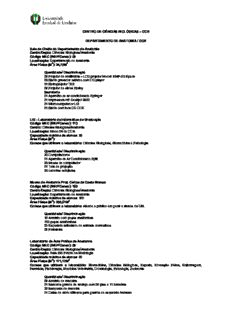
CENTRO DE CIÊNCIAS BIOLÓGICAS – CCB DEPARTAMENTO DE ANATOMIA / CCB Sala da
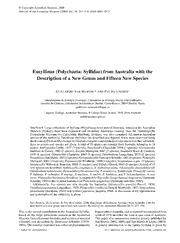
Eusyllinae (Polychaeta: Syllidae) from Australia with the description of a new genus and fifteen new species
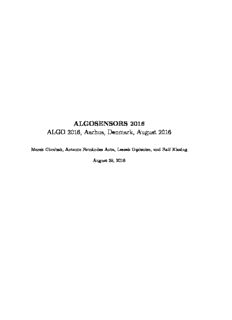
ALGOSENSORS 2016 ALGO 2016, Aarhus, Denmark, August 2016

BWT AQA basic

Tell Me to Stay - Charlotte Byrd
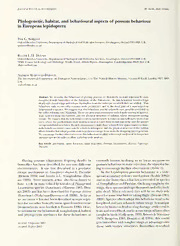
Phylogenetic, habitat, and behavioural aspects of possum behaviour in European lepidoptera
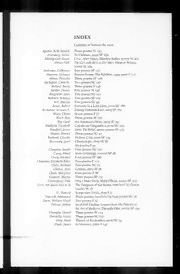
Prairie Schooner 2006: Vol 80 Index

Slaves of Socorro

ERIC EJ1069138: Taking a Closer Look at Reading Online
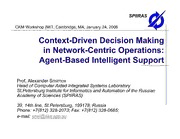
DTIC ADA515001: Context-Driven Decision Making in Network-Centric Operations: Agent-Based Intelligent Support
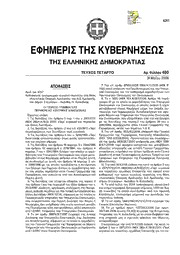
Greek Government Gazette: Part 4, 2006 no. 480
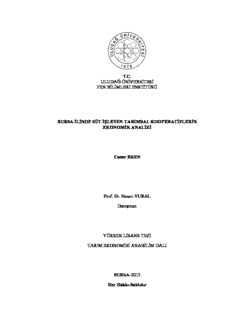
Bursa İlinde Süt İşleyen Tarımsal Kooperatiflerin Ekonomik Analizi 16.2.2016 08:21:22

by URTHER RWAFA submitted in accordance with the requirements
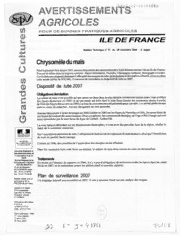
Avertissements Agricoles - Grandes cultures - Ile de France - 2006 - 37

Upgrade, Renovation, & Add
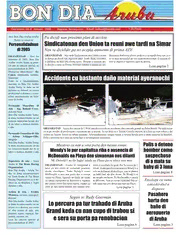
Bon Dia Aruba (4 Januari 2006)
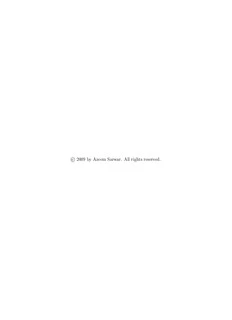
c 2009 by Azeem Sarwar. All rights reserved. - ResearchGate

Gorgeous George: The Outrageous Bad-Boy Wrestler Who Created American Pop Culture
